All-Russian Engineering Olympiad for high school students: Space Systems
“Burn the land and boil the sea. You can't take the sky from me. "
- Ballad of Serenity
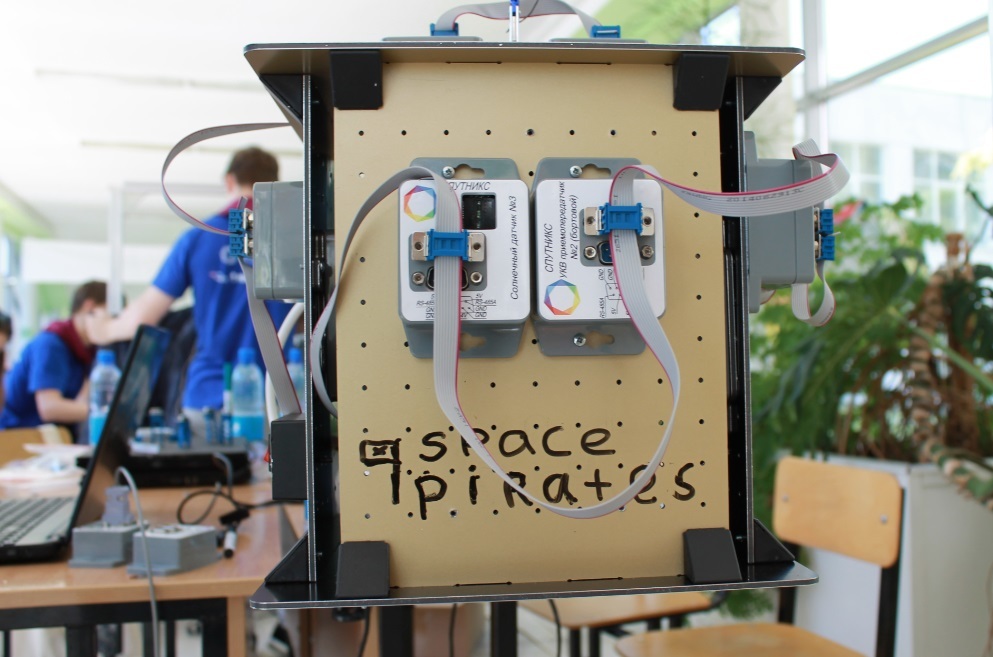
“What Olympiad did I want to participate in if I were a schoolboy?” I asked myself about 4 years ago. - "In space". While I was “dreaming,” some people started prompting and did. My contribution is to tell about this to other “dreamers” (and, perhaps, to inspire them to act).
')
At the end of April, the first (zero) All-Russian Engineering Olympiad successfully “took off” at the Orlenok All-Russian Educational Center.
The Olympiad was held in four profiles.
About the first two profiles and the overall situation in the "Eaglet" I told in Habré . Under the cut - about what constitutes the "satellite designer" and examples of the tasks of the first All-Russian "space" Olympiad.
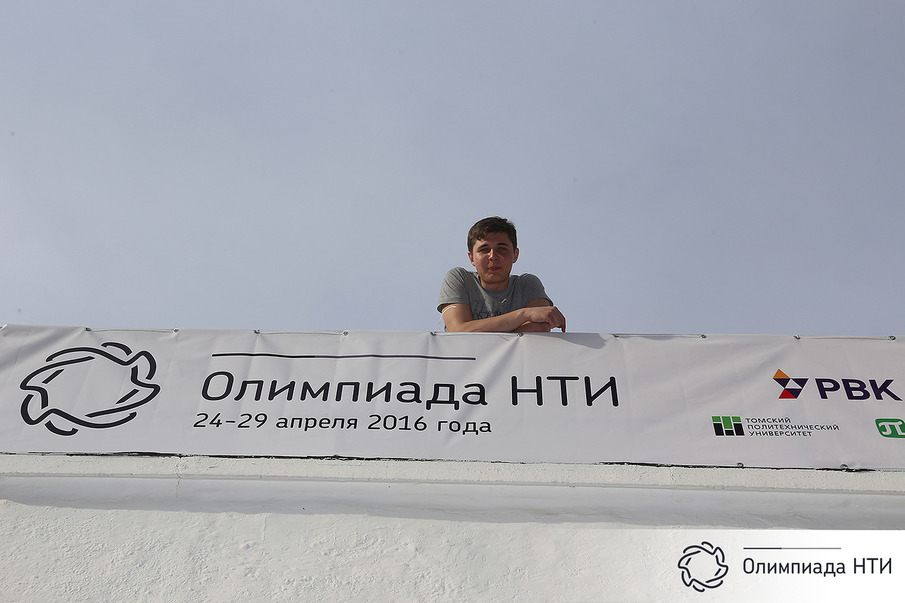
The Olympiad consisted of two correspondence stages and two full-time students (individual and team).
The organizers are generally interested in immersing the participants in the most vital tasks, necessarily commanding, because such tasks are very helpful in the career guidance and choice of life in school.
However, there are certain criteria that are defined by an organization called the Russian Council of Schoolchildren Olympiads (RISS), which impose certain limits: the tasks must be substantive, the works must be individual, and do not even think about using the Internet.
For this reason, the organizers decided that they would follow the path of distributing different tasks to different stages: at least, laid down by the Council - in the first part-time and in person full-time. The tasks of life, the code from the githab and the commandness are in the second part-time and team-based.
As a result, points are summarized, and all requirements are met.
In general, after the end of the Olympiad, the organizers prepared a “brick” for 1000 pages for two weeks with a description of everything that was possible, sent it to the RSSC and now they are sitting on a low start to start preparing the next year's Olympiad. The official answer will be on September 1, but the orgy risk guys will start writing tasks and preparing lectures with hackathons in the summer.
Results of the Olympics - nti-contest.ru/results2016
Manual 400 pages on the Olympiad is here .
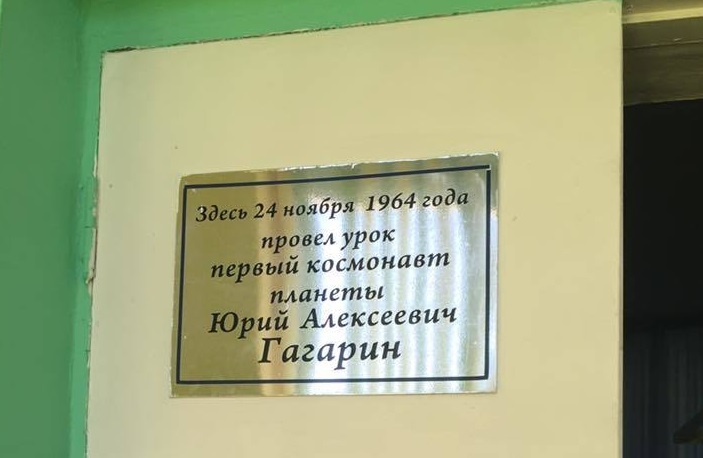

Finalists

Preparation before the team tour, all the modules were checked, I spied
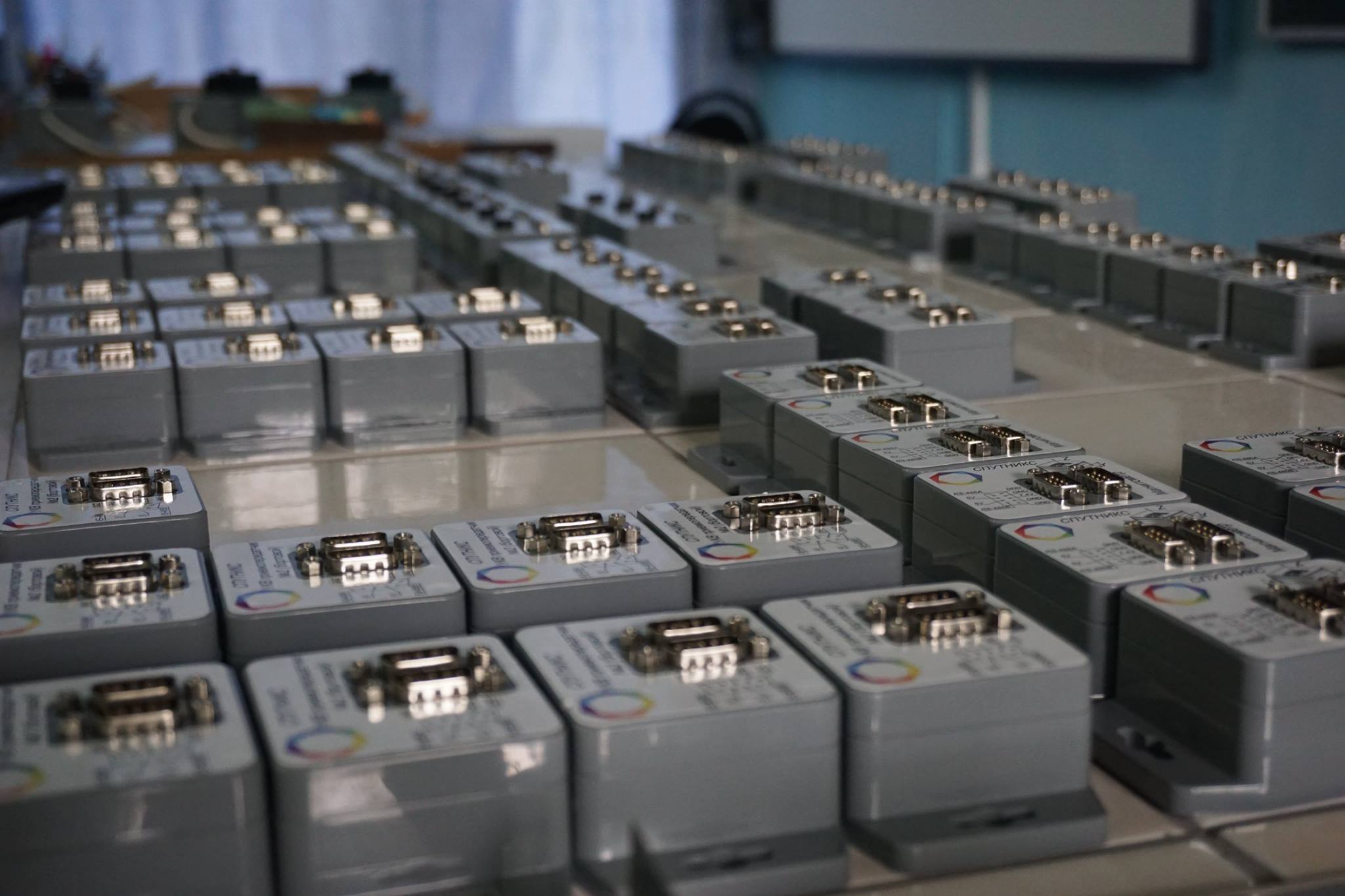
More information about the designer OrbiCraft - here .
This is Anton Vlaskin and Dmitry Andreenkov - experts on the design and programming of satellites onHeroes of Might and Magic 3 .
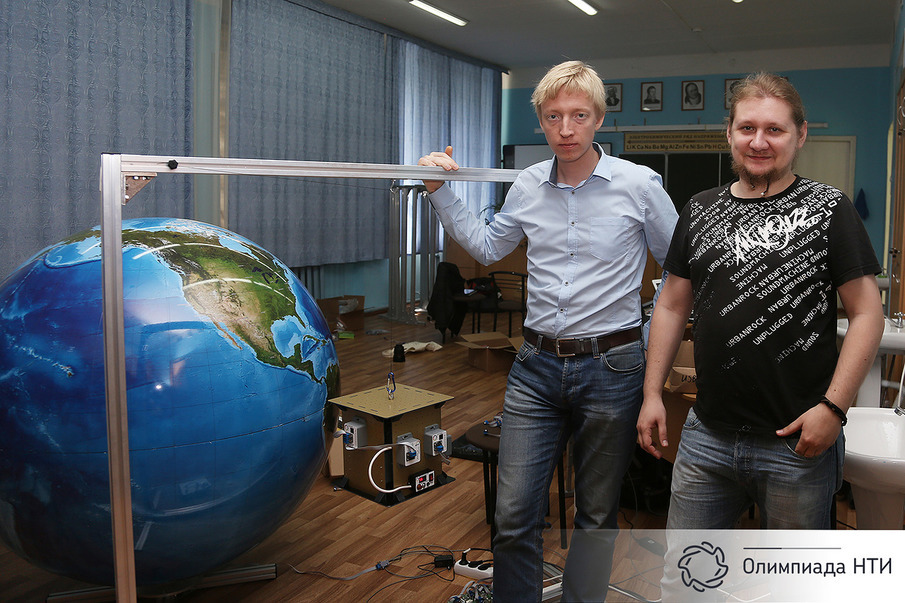
And these are two more experts - Alexander Shaenko (cosmic evangelist, star igniter ) and Andrey Potapov (an excellent forward in the basketball team counselors and the director of Sputnik)

Preliminary results of the teams
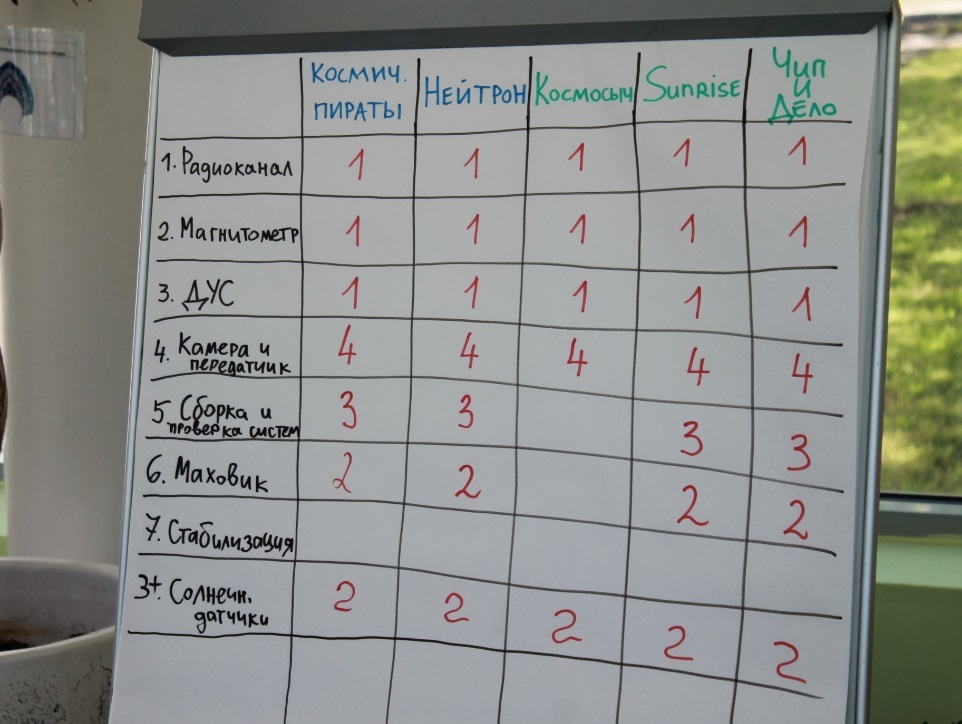
You can feed the participants of the Olympiad only from tubes, which is what ORKK took advantage of.
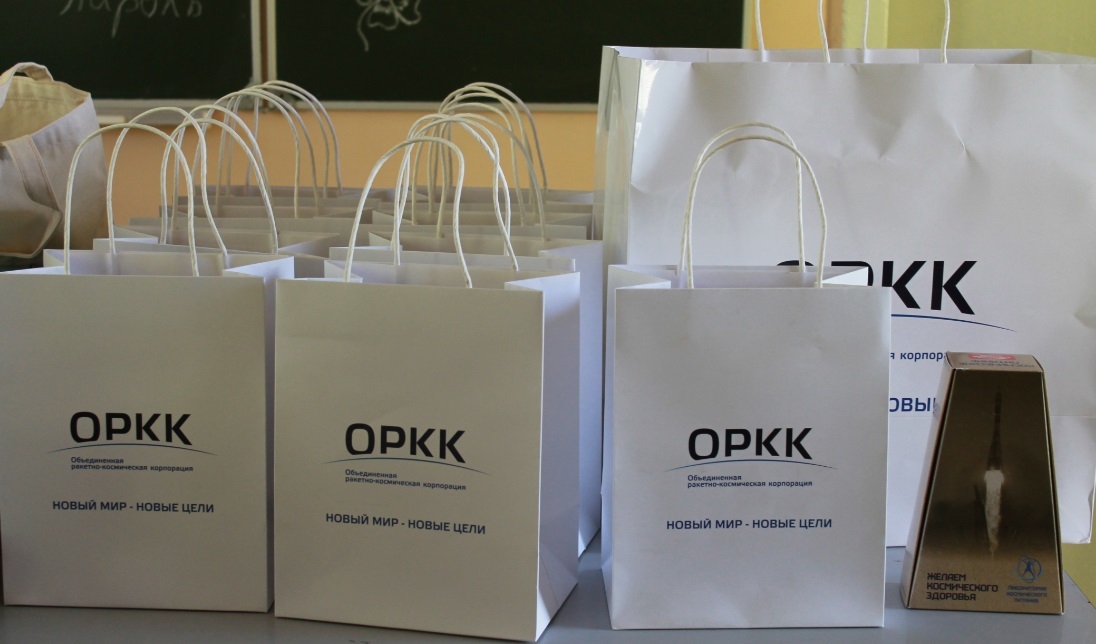
How would you call a yacht ...

Team slogan: “Weakness and courage”

Member feedback:

Winners - Space Pirates team
“The following are plans for the space track.

Personally, I want to say thanks to Alena Ilyina (for everything), Ksenia Makarova and Yulia Grabovskaya (for putting up with me), Irina Abzalova (for the beautiful photos), the sysadmin (for the Internet and anime), all the space engineers (for basketball and Heroes 3 ), as well as RVK companies (they say, if it were not for them, then there would be nothing)
- Ballad of Serenity

“What Olympiad did I want to participate in if I were a schoolboy?” I asked myself about 4 years ago. - "In space". While I was “dreaming,” some people started prompting and did. My contribution is to tell about this to other “dreamers” (and, perhaps, to inspire them to act).
')
At the end of April, the first (zero) All-Russian Engineering Olympiad successfully “took off” at the Orlenok All-Russian Educational Center.
The Olympiad was held in four profiles.
- Big data and machine learning.
- Intellectual energy systems.
- Space systems.
- Autonomous transport systems.
About the first two profiles and the overall situation in the "Eaglet" I told in Habré . Under the cut - about what constitutes the "satellite designer" and examples of the tasks of the first All-Russian "space" Olympiad.
Organizational Issues

The Olympiad consisted of two correspondence stages and two full-time students (individual and team).
The organizers are generally interested in immersing the participants in the most vital tasks, necessarily commanding, because such tasks are very helpful in the career guidance and choice of life in school.
However, there are certain criteria that are defined by an organization called the Russian Council of Schoolchildren Olympiads (RISS), which impose certain limits: the tasks must be substantive, the works must be individual, and do not even think about using the Internet.
For this reason, the organizers decided that they would follow the path of distributing different tasks to different stages: at least, laid down by the Council - in the first part-time and in person full-time. The tasks of life, the code from the githab and the commandness are in the second part-time and team-based.
As a result, points are summarized, and all requirements are met.
In general, after the end of the Olympiad, the organizers prepared a “brick” for 1000 pages for two weeks with a description of everything that was possible, sent it to the RSSC and now they are sitting on a low start to start preparing the next year's Olympiad. The official answer will be on September 1, but the orgy risk guys will start writing tasks and preparing lectures with hackathons in the summer.
Results of the Olympics - nti-contest.ru/results2016
Manual 400 pages on the Olympiad is here .

Space systems

Finalists

Preparation before the team tour, all the modules were checked, I spied

More information about the designer OrbiCraft - here .
This is Anton Vlaskin and Dmitry Andreenkov - experts on the design and programming of satellites on

And these are two more experts - Alexander Shaenko (cosmic evangelist, star igniter ) and Andrey Potapov (an excellent forward in the basketball team counselors and the director of Sputnik)

First qualifying stage
The first qualifying round is held individually on the Internet, works are automatically evaluated by means of an online testing system. For each of the parallels (grade 9 or grade 10-11) a different set of tasks in physics is proposed, tasks in mathematics and computer science are common to all participants. Solving computer science problems involved writing programs, it was allowed to use one of two programming languages: Python or C ++. To solve the problems of the first qualifying stage, participants were given 3 weeks. The solution to each problem gives a certain number of points. Points are credited in full for the correct solution of the problem. Participants receive a score for solving problems in the aggregate in all subjects of this profile (mathematics, physics and computer science) - in total from 0 to 30 points.
Problem in mathematics 9 grade 1.1.3 (3 points)
The locator sees a portion of the space bounded by a cone. The maximum angle between the generators of this cone is 60 degrees. Objects that are farther than distance a are already far away and do not fall within the visibility zone of the locator. Two perpendicular planes are drawn through the axis of the cone, which divide the cone into four parts. In one of the parts found an object in the form of a sphere, inscribed in this part. The sphere touches both perpendicular planes, the surface of the cone and its base. The length of the generator is a . Find the radius of this sphere.
Solution on page 273
The task of physics 9 class 1.2.4 (3 points)
During the crystal growing experiment, the cooling system broke and the sample already grown melted. To study there was only a graph of temperature versus time, but it was also damaged. Restore the price of tick marks on this chart. It is known that heat transfer is proportional to the temperature difference, the external temperature is 400 K. The following materials are known for the material: melting point 300 K, heat of fusion λ = 24 kcal / kg, heat capacity of the liquid phase Szh = 8000kal / kg * K, thermal conductivity 32 J / degree Sample mass 1 kg .

Record the price of the tick marks. Give the answer in degrees, up to integers.
Solution on page 278
The task of physics 9 class 1.2.5 (4 points)
The satellite, located at an altitude of H = 7000 km from the center of the planet with a mass M = 1.076 * 1023 kg, moves to the same orbit along the height that intersects the original orbit at an angle α = 5º. Find the force with which the satellite maneuvering engines acted, if it is known that the turn took t = 30 s and the satellite’s mass m = 50 kg. Give the answer in newtons up to integers.
Solution on page 278
Problem in physics 10-11 class 1.3.3 (2 points)
A satellite of mass m = 100 kg, located in an orbit of radius L = 2500 km, orbiting around a planet of mass M = 4.8017 · 1022 kg, accelerates, makes an elliptical transition to an orbit of radius 2L = 5000 km. Find the time required for the transition. The speed changes made at the apocenter and pericenter are considered instantaneous. Give the answer in hours, up to tenths.

Solution on page 281
Problem in physics 10-11 class 1.3.5 (3 points)
Below is a plot of the height of the atmosphere of Jupiter.
Considering the gravitational acceleration g to be constant g = 25 m / s 2 , find the depth of the dive if the probe descends from the height H1 = 7 ∗ 104 km downwards without the initial velocity. Consider the average density of the probe ρ = 1.49 g / cm 3

Give the answer in kilometers and round up to thousands.
Solution on page 283
The task of computer science 1.4.3 "Flight" (6 points)
At a height of h meters above the surface of the planet is the body. At the initial moment of time its speed is equal to v⃗ meters per second. Calculate the time until the body touches the surface of the planet, if it is known that:
- h at the initial moment of time does not exceed ten kilometers, and the instantaneous speed is one kilometer per second.
- The body is affected by the gravitational force of the planet. The acceleration created by this force is equal to and directed to the center of the planet. Here G is the gravitational constant, M is the mass of the planet, and R is the distance from the center of the planet to the body. Consider the value of GM equal to 4 × 1013, and the radius of the planet - 6,300,000 meters.
and directed to the center of the planet. Here G is the gravitational constant, M is the mass of the planet, and R is the distance from the center of the planet to the body. Consider the value of GM equal to 4 × 1013, and the radius of the planet - 6,300,000 meters.
- The body is also affected by the force of aerodynamic drag. You can assume that the acceleration created by this force is equal to where ρ is the density
where ρ is the density
atmosphere at a given height, expressed by the formula - instantaneous body speed, and
- instantaneous body speed, and  - module of instant speed.
- module of instant speed.
- Under these restrictions, the displacement along the tangent to the surface of the planet is much smaller than its radius of the planet, therefore, the curvature of the planet should be neglected.
We understand that analytically this problem is difficult to solve, so we will take the answer with an absolute error of 0.1 second. And we warn that changing the state of the body too much is not a good idea.
Input format:
The first line contains one positive integer h - the body height at the initial moment of time, expressed in meters. The second line contains two integers. - coordinates of the initial velocity of the body in meters per second. The axis Oy at the same time is directed in the direction opposite to the direction of the force of gravity, and the axis Ox is perpendicular
- coordinates of the initial velocity of the body in meters per second. The axis Oy at the same time is directed in the direction opposite to the direction of the force of gravity, and the axis Ox is perpendicular
Oy axis.
Input example 1:
100
10 10
Input example 2:
one
0 0
Output Format:
Print the only real number - the time until the body touches the planet's surface, expressed in seconds.
Example output 1:
290
105.3283038851984
Example output 2:
1.6649107662192795
Solution on page 291
Examples of tasks
Problem in mathematics 9 grade 1.1.3 (3 points)
The locator sees a portion of the space bounded by a cone. The maximum angle between the generators of this cone is 60 degrees. Objects that are farther than distance a are already far away and do not fall within the visibility zone of the locator. Two perpendicular planes are drawn through the axis of the cone, which divide the cone into four parts. In one of the parts found an object in the form of a sphere, inscribed in this part. The sphere touches both perpendicular planes, the surface of the cone and its base. The length of the generator is a . Find the radius of this sphere.
Solution on page 273
The task of physics 9 class 1.2.4 (3 points)
During the crystal growing experiment, the cooling system broke and the sample already grown melted. To study there was only a graph of temperature versus time, but it was also damaged. Restore the price of tick marks on this chart. It is known that heat transfer is proportional to the temperature difference, the external temperature is 400 K. The following materials are known for the material: melting point 300 K, heat of fusion λ = 24 kcal / kg, heat capacity of the liquid phase Szh = 8000kal / kg * K, thermal conductivity 32 J / degree Sample mass 1 kg .

Record the price of the tick marks. Give the answer in degrees, up to integers.
Solution on page 278
The task of physics 9 class 1.2.5 (4 points)
The satellite, located at an altitude of H = 7000 km from the center of the planet with a mass M = 1.076 * 1023 kg, moves to the same orbit along the height that intersects the original orbit at an angle α = 5º. Find the force with which the satellite maneuvering engines acted, if it is known that the turn took t = 30 s and the satellite’s mass m = 50 kg. Give the answer in newtons up to integers.
Solution on page 278
Problem in physics 10-11 class 1.3.3 (2 points)
A satellite of mass m = 100 kg, located in an orbit of radius L = 2500 km, orbiting around a planet of mass M = 4.8017 · 1022 kg, accelerates, makes an elliptical transition to an orbit of radius 2L = 5000 km. Find the time required for the transition. The speed changes made at the apocenter and pericenter are considered instantaneous. Give the answer in hours, up to tenths.

Solution on page 281
Problem in physics 10-11 class 1.3.5 (3 points)
Below is a plot of the height of the atmosphere of Jupiter.
Considering the gravitational acceleration g to be constant g = 25 m / s 2 , find the depth of the dive if the probe descends from the height H1 = 7 ∗ 104 km downwards without the initial velocity. Consider the average density of the probe ρ = 1.49 g / cm 3

Give the answer in kilometers and round up to thousands.
Solution on page 283
The task of computer science 1.4.3 "Flight" (6 points)
At a height of h meters above the surface of the planet is the body. At the initial moment of time its speed is equal to v⃗ meters per second. Calculate the time until the body touches the surface of the planet, if it is known that:
- h at the initial moment of time does not exceed ten kilometers, and the instantaneous speed is one kilometer per second.
- The body is affected by the gravitational force of the planet. The acceleration created by this force is equal to
 and directed to the center of the planet. Here G is the gravitational constant, M is the mass of the planet, and R is the distance from the center of the planet to the body. Consider the value of GM equal to 4 × 1013, and the radius of the planet - 6,300,000 meters.
and directed to the center of the planet. Here G is the gravitational constant, M is the mass of the planet, and R is the distance from the center of the planet to the body. Consider the value of GM equal to 4 × 1013, and the radius of the planet - 6,300,000 meters.- The body is also affected by the force of aerodynamic drag. You can assume that the acceleration created by this force is equal to
 where ρ is the density
where ρ is the densityatmosphere at a given height, expressed by the formula
 - instantaneous body speed, and
- instantaneous body speed, and  - module of instant speed.
- module of instant speed.- Under these restrictions, the displacement along the tangent to the surface of the planet is much smaller than its radius of the planet, therefore, the curvature of the planet should be neglected.
We understand that analytically this problem is difficult to solve, so we will take the answer with an absolute error of 0.1 second. And we warn that changing the state of the body too much is not a good idea.
Input format:
The first line contains one positive integer h - the body height at the initial moment of time, expressed in meters. The second line contains two integers.
 - coordinates of the initial velocity of the body in meters per second. The axis Oy at the same time is directed in the direction opposite to the direction of the force of gravity, and the axis Ox is perpendicular
- coordinates of the initial velocity of the body in meters per second. The axis Oy at the same time is directed in the direction opposite to the direction of the force of gravity, and the axis Ox is perpendicularOy axis.
Input example 1:
100
10 10
Input example 2:
one
0 0
Output Format:
Print the only real number - the time until the body touches the planet's surface, expressed in seconds.
Example output 1:
290
105.3283038851984
Example output 2:
1.6649107662192795
Solution on page 291
Second qualifying stage
The second qualifying stage is held in a command format on the Internet as part of the online flight simulator and landing of Orbit spacecraft. The duration of the second qualifying stage - 2 weeks. Works are evaluated automatically by means of an online simulator. The tasks are interdisciplinary in nature and in a simpler form they recreate the engineering task of the final stage, the participants had to write flight programs in Python.
The scope and complexity of the tasks of this stage are selected in such a way that the solution of all tasks by one team is unlikely. This is intended to provide a more informed choice of tasks solved by the team. The solution to each problem gives a certain number of points.
Some tasks can bring a different number of points - depending on the quality and speed of their solution, a number of tasks imply penalties for the number of attempts. At this stage, another rating system is used; theoretically, you can get a total of from 0 to 74510 points.
All task conditions are available to participants from the first day of the second qualifying round.
Teams can perform tasks in any order. Some tasks allow an unlimited number of attempts to pass the solution (launches), other tasks assume penalty points for exceeding the number of available attempts.
Problem 2.1 "Landing on the Moon" (max. 180 points)
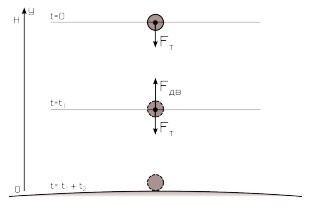
The moon is the closest astronomical object to Earth. Landing a ship on the moon is the simplest task with which mankind has already coped more than once. The creation and launch of the apparatus for the study of the lunar surface consists of several stages. In this problem we will consider only one, but the most interesting stage is the landing of the vehicle. You will have to design your own apparatus and draw up a technical task for its production, wait for the results of the flight and get a telemetry of the landing process.
Successfully plant the device on the first attempt is not easy. In case of failure, you have to analyze the telemetry data and change the technical task for the next launch.
Formulation of the problem
This is only the first training task, so there are several assumptions: it falls vertically on the surface of the moon, its initial speed is zero, and from the available equipment there is only a damper and a brake motor.
The task is to determine at what point in time t1 the brake motor must be turned on, so that by the time of landing t1 + t2 the ship’s speed would be less than 50 m / s, otherwise the impact will not be able to be sorted with a damper.
In other words, you need to calculate two parameters — the time to turn on the brake motor and the time to turn it off — and insert them into the flight program of the vehicle.
All the initial data are known: this is the initial height, mass and radius of the moon, the mass of the apparatus, the force of the brake motor.
Full text of the task on page 293
Task 2.2 "Landing on Mars" (max. 1650 points)
The Red Planet is a much more complex spacecraft landing object than the Moon. First, Mars is much more massive, which means gravity plays a much larger role. Secondly, there is an atmosphere on Mars, so the influence of atmospheric resistance on the movement of a ship near the surface will be significant.
In this task, the operation of the apparatus on the surface will also not be considered. At your disposal there will again be a fully designed vehicle, but you will have to program its flight yourself: choose at what point you need to turn on the brake engine, open the parachute, etc.
Analysis of telemetry will allow to correct mistakes made during landing, already in the next device.
Formulation of the problem

Compared to the moon, the task becomes more complicated: now we have to work in two dimensions. The device has an initial horizontal (orbital) speed. Moreover, now the apparatus is affected not only by the force of gravity, but also by the force of aerodynamic drag (Stokes), which is proportional to the square of the velocity of the apparatus. However, in this problem there is a simplification: the surface of the planet is taken as a plane. Also, you will be available a special program for calculations.
The condition of the problem makes the analytical solution very difficult, so we suggest that you qualitatively evaluate the values of speeds and forces, as well as carefully analyze the results of unsuccessful flights.
Full text of the task on page 297
Problem 2.3. "Work on the surface of Mars" (max. 20,000 points)
The design of the apparatus
We suggest you continue the mission to conquer Mars with the development of a device for working on the surface of the planet. Having made a successful landing, your device will begin to transmit scientific data to Earth, which will enhance the knowledge of mankind about the Red Planet.
Victory conditions:
For the successful solution of this mission, you get winning points. In this mission, you get points for the scientific information transmitted to Earth as follows: For each 1 megabit (1000 kilobits) scientific information transmitted to the earth, the team gets 0.1 points (in other words, the number of points = information transmitted / 1000). You are given 10 attempts. Each additional attempt beyond these ten takes the team 30 points. Thus, you can get no more than 30 additional attempts (i.e. Minus 900 points).
The mission also has the following achievements:
Formulation of the problem
If from the point of view of physics, the problem remains the same, then its design part will be much more complicated. You have to completely design the device and make a program not only for landing, but also for planetary activity. The device can work on the surface of Mars not more than 72 Earth (!) Hours.
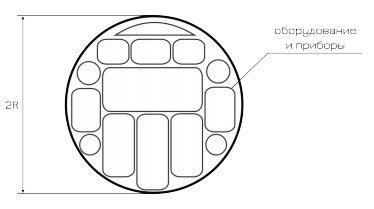
You do not have to design an arbitrary device from scratch. At your disposal will be a spherical apparatus, its size, you can install yourself. You will have to calculate the required external parameters of the device (mass and radius), choose the necessary equipment for work and scientific instruments.
We recommend the following order of development:
The design of the device and the flight program must take into account the level of power supply in the ship, so that all systems have enough energy, as well as the capacity of communication systems, so that information can be transmitted to Earth in the right amount.
In addition to the design of the device, you have to develop a flight program, for example, to determine the time when brake engines or scientific instruments should switch on and off.
Complete data on the task on page 305 .
Problem 2.5 "Communication with the Earth" (max. 520)
The spacecraft moves in a circular orbit with a given height in the X0Y plane. It is necessary to program the device so that it transmits the specified message to Earth. It is necessary to take advantage of high-performance communications spacecraft. The task is complicated by two factors: the signal is shielded by the Earth, the antenna of such a subsystem has an opening angle (γ) specified in the spacecraft parameters.
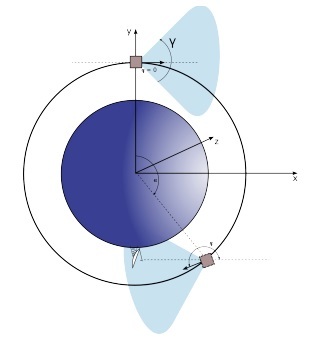
We will assume that the ground measuring point (NIP) tracks the position of the spacecraft, so you only need to orient the device to the NPC.
In this mission, you do not need to design the device entirely, but you will need to select several parameters for the design of the device - the area of solar panels and radiators, as well as write a flight program. We recommend that you use the lessons learned in the previous mission.
The spacecraft is equipped with an orientation and stabilization subsystem, which allows you to set the torque through the inclusion of a flywheel, as well as a high-performance communication subsystem, the parameters of which are shown in the table below. The SC as in the first training mission at the beginning of the flight will have a starting angular velocity, which will have to be repaid for the successful completion of the mission.

When designing the device, you need to calculate and specify the areas for solar batteries and radiators on the edges of 1-4 devices and the area of radiators on the edges of 5-6 devices, for example:

Full text of the task on page 321
Task 2.7 "Survey of the Earth from space" (max. 12500 points)
The task “Survey of the Earth from space” is devoted to the shooting of the Earth's surface from space by a small spacecraft. You will need to photograph an object on the surface of the Earth and transfer the resulting image to a ground measuring station (NIP) using high-performance communications.

Full text of the task on page 332
Task 2.8. “SMS everywhere” (max. 9200 points)
«SMS » , 18 ( «0», «1», «2» ..).
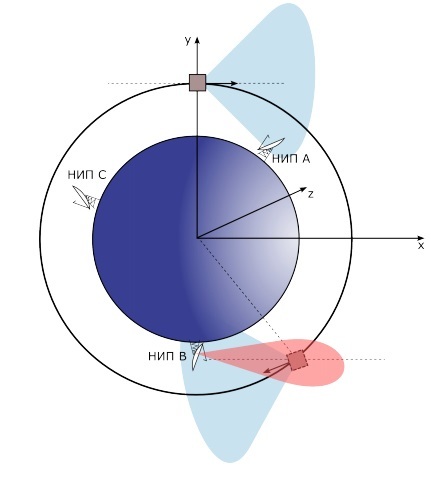
10 . 10- 150 , 20 ( -3000 ).
, : ; ; ( 5 ).
, . , , .
6 .
337
The scope and complexity of the tasks of this stage are selected in such a way that the solution of all tasks by one team is unlikely. This is intended to provide a more informed choice of tasks solved by the team. The solution to each problem gives a certain number of points.
Some tasks can bring a different number of points - depending on the quality and speed of their solution, a number of tasks imply penalties for the number of attempts. At this stage, another rating system is used; theoretically, you can get a total of from 0 to 74510 points.
All task conditions are available to participants from the first day of the second qualifying round.
Teams can perform tasks in any order. Some tasks allow an unlimited number of attempts to pass the solution (launches), other tasks assume penalty points for exceeding the number of available attempts.
Examples of tasks
Problem 2.1 "Landing on the Moon" (max. 180 points)

The moon is the closest astronomical object to Earth. Landing a ship on the moon is the simplest task with which mankind has already coped more than once. The creation and launch of the apparatus for the study of the lunar surface consists of several stages. In this problem we will consider only one, but the most interesting stage is the landing of the vehicle. You will have to design your own apparatus and draw up a technical task for its production, wait for the results of the flight and get a telemetry of the landing process.
Successfully plant the device on the first attempt is not easy. In case of failure, you have to analyze the telemetry data and change the technical task for the next launch.
Formulation of the problem
This is only the first training task, so there are several assumptions: it falls vertically on the surface of the moon, its initial speed is zero, and from the available equipment there is only a damper and a brake motor.
The task is to determine at what point in time t1 the brake motor must be turned on, so that by the time of landing t1 + t2 the ship’s speed would be less than 50 m / s, otherwise the impact will not be able to be sorted with a damper.
In other words, you need to calculate two parameters — the time to turn on the brake motor and the time to turn it off — and insert them into the flight program of the vehicle.
All the initial data are known: this is the initial height, mass and radius of the moon, the mass of the apparatus, the force of the brake motor.
Full text of the task on page 293
Task 2.2 "Landing on Mars" (max. 1650 points)
The Red Planet is a much more complex spacecraft landing object than the Moon. First, Mars is much more massive, which means gravity plays a much larger role. Secondly, there is an atmosphere on Mars, so the influence of atmospheric resistance on the movement of a ship near the surface will be significant.
In this task, the operation of the apparatus on the surface will also not be considered. At your disposal there will again be a fully designed vehicle, but you will have to program its flight yourself: choose at what point you need to turn on the brake engine, open the parachute, etc.
Analysis of telemetry will allow to correct mistakes made during landing, already in the next device.
Formulation of the problem

Compared to the moon, the task becomes more complicated: now we have to work in two dimensions. The device has an initial horizontal (orbital) speed. Moreover, now the apparatus is affected not only by the force of gravity, but also by the force of aerodynamic drag (Stokes), which is proportional to the square of the velocity of the apparatus. However, in this problem there is a simplification: the surface of the planet is taken as a plane. Also, you will be available a special program for calculations.
The condition of the problem makes the analytical solution very difficult, so we suggest that you qualitatively evaluate the values of speeds and forces, as well as carefully analyze the results of unsuccessful flights.
Full text of the task on page 297
Problem 2.3. "Work on the surface of Mars" (max. 20,000 points)
The design of the apparatus
We suggest you continue the mission to conquer Mars with the development of a device for working on the surface of the planet. Having made a successful landing, your device will begin to transmit scientific data to Earth, which will enhance the knowledge of mankind about the Red Planet.
Victory conditions:
For the successful solution of this mission, you get winning points. In this mission, you get points for the scientific information transmitted to Earth as follows: For each 1 megabit (1000 kilobits) scientific information transmitted to the earth, the team gets 0.1 points (in other words, the number of points = information transmitted / 1000). You are given 10 attempts. Each additional attempt beyond these ten takes the team 30 points. Thus, you can get no more than 30 additional attempts (i.e. Minus 900 points).
The mission also has the following achievements:
- Researcher - Transfer scientific data from Mars of any size (100 points)
- First Mover - First in time to transfer scientific data from Mars (200 points)
- Equipment Delivery - The heaviest machine that landed on Mars and transmitted data (300 points)
- Efficiency - The lightest machine, landing on Mars and transmitting data (500 points)
- Space Race - Send scientific data from Mars during the first three days after the team received the task (300 points)
- Reliable design - The device worked on Mars for all 72 hours (200 points)
Formulation of the problem
If from the point of view of physics, the problem remains the same, then its design part will be much more complicated. You have to completely design the device and make a program not only for landing, but also for planetary activity. The device can work on the surface of Mars not more than 72 Earth (!) Hours.

You do not have to design an arbitrary device from scratch. At your disposal will be a spherical apparatus, its size, you can install yourself. You will have to calculate the required external parameters of the device (mass and radius), choose the necessary equipment for work and scientific instruments.
We recommend the following order of development:
- design the device with the maximum payload and plant it;
- fill the payload with the necessary equipment to ensure maximum scientific results.
The design of the device and the flight program must take into account the level of power supply in the ship, so that all systems have enough energy, as well as the capacity of communication systems, so that information can be transmitted to Earth in the right amount.
In addition to the design of the device, you have to develop a flight program, for example, to determine the time when brake engines or scientific instruments should switch on and off.
Complete data on the task on page 305 .
Problem 2.5 "Communication with the Earth" (max. 520)
The spacecraft moves in a circular orbit with a given height in the X0Y plane. It is necessary to program the device so that it transmits the specified message to Earth. It is necessary to take advantage of high-performance communications spacecraft. The task is complicated by two factors: the signal is shielded by the Earth, the antenna of such a subsystem has an opening angle (γ) specified in the spacecraft parameters.

We will assume that the ground measuring point (NIP) tracks the position of the spacecraft, so you only need to orient the device to the NPC.
In this mission, you do not need to design the device entirely, but you will need to select several parameters for the design of the device - the area of solar panels and radiators, as well as write a flight program. We recommend that you use the lessons learned in the previous mission.
The spacecraft is equipped with an orientation and stabilization subsystem, which allows you to set the torque through the inclusion of a flywheel, as well as a high-performance communication subsystem, the parameters of which are shown in the table below. The SC as in the first training mission at the beginning of the flight will have a starting angular velocity, which will have to be repaid for the successful completion of the mission.

When designing the device, you need to calculate and specify the areas for solar batteries and radiators on the edges of 1-4 devices and the area of radiators on the edges of 5-6 devices, for example:

Full text of the task on page 321
Task 2.7 "Survey of the Earth from space" (max. 12500 points)
The task “Survey of the Earth from space” is devoted to the shooting of the Earth's surface from space by a small spacecraft. You will need to photograph an object on the surface of the Earth and transfer the resulting image to a ground measuring station (NIP) using high-performance communications.

Full text of the task on page 332
Task 2.8. “SMS everywhere” (max. 9200 points)
«SMS » , 18 ( «0», «1», «2» ..).

10 . 10- 150 , 20 ( -3000 ).
, : ; ; ( 5 ).
, . , , .
6 .
337
The final stage: the individual part
: (, , ) . 2 . (9 10-11 ) , . (. ). 0 . ,
: Python C++. . (, ) — 0 38 .
3.1.4 (4 )
φ (sin φ, sin 2φ, cos 2φ). , .
. 363
3.2.2 (3 )

, , , . , τ = 2c , , . , , ? , , ?
: M = 1200, L = 2, F = 710, N = 50. , J = 903·2. , . , . , , .
. 365
3.3.3 (3 )

H = 35 786 . 2 10 (. , ). β = 75% ( ). 2 ·, , B ? L = 1367 /², R = 150 . . , .
— , .
.370
3.4.5 «» (3 )
, , , -. , . : - . h .
. : ki ri. , , , , . . . , , , .
.
, .
:
1≤N≤5000 h≤20000. N idi — , 0≤ki≤1000 — i- 1≤ri≤10000 — i- . .
:
M — h. M . , : , .
, .
. 381
: Python C++. . (, ) — 0 38 .
3.1.4 (4 )
φ (sin φ, sin 2φ, cos 2φ). , .
. 363
3.2.2 (3 )

, , , . , τ = 2c , , . , , ? , , ?
: M = 1200, L = 2, F = 710, N = 50. , J = 903·2. , . , . , , .
. 365
3.3.3 (3 )

H = 35 786 . 2 10 (. , ). β = 75% ( ). 2 ·, , B ? L = 1367 /², R = 150 . . , .
— , .
.370
3.4.5 «» (3 )
, , , -. , . : - . h .
. : ki ri. , , , , . . . , , , .
.
, .
:
1≤N≤5000 h≤20000. N idi — , 0≤ki≤1000 — i- 1≤ri≤10000 — i- . .
:
M — h. M . , : , .
, .
. 381
Final stage: command part
- , . — 3 ( 18 ).
. . . (5 ).
:
, , . Python C++.



, :

.
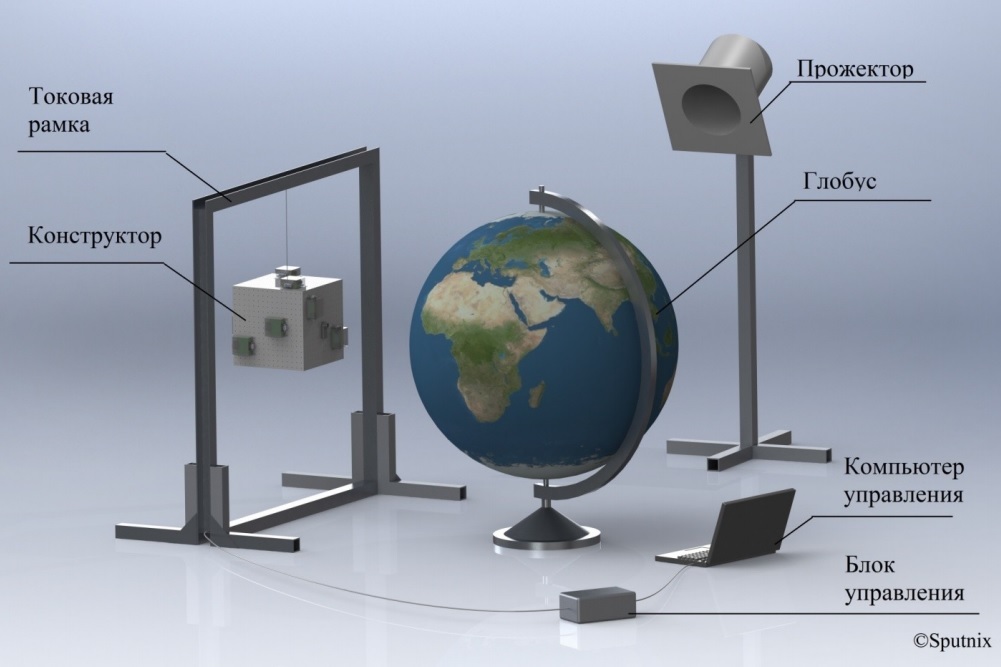
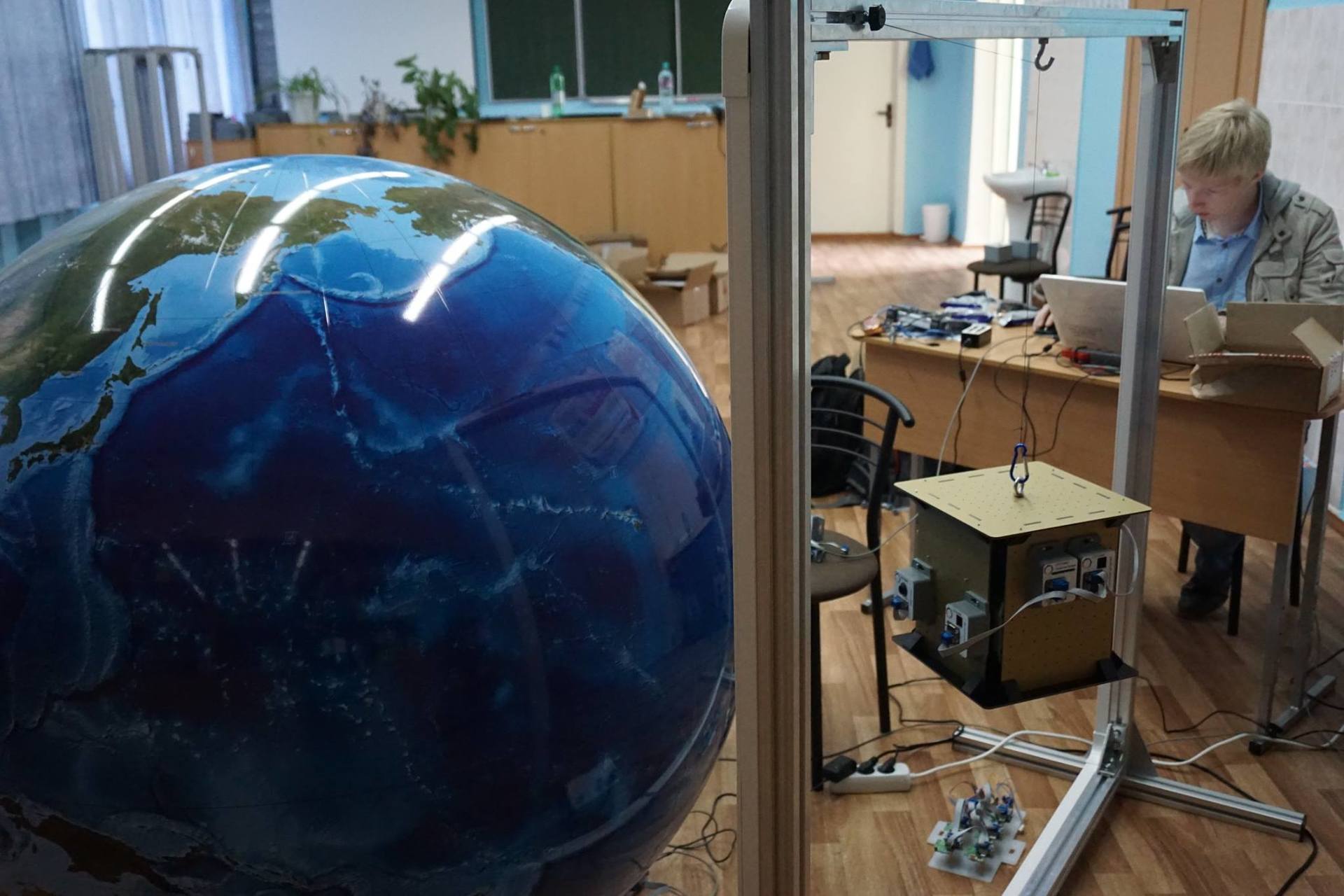
. . «» .

Python C++ , .
C++: wiki.orbicraft.ru/doku.php?id=libschsat
Python: wiki.orbicraft.ru/doku.php?id=libschsat-py
10 11 .
11 .
( ):
— ( 5 ).
«» -100°, «» .
(), ( ):
— 5° , .
, :

4.7.10 « »
: . 5 , . . , . , .
.

4.7.11 « »
: . , . 5 , .
, . . .
.
( №1 №11) :
. 384
. . . (5 ).
- . .
- . ( ).
- . ( , ).
- . ( ) .
- . .
- . , , , .
- -. -.
- . .
- . .
:
- «», :
- 4 , 1 1 ;
- ;
- ;
- -;
- ;
- (4 .);
- ;
- ;
- -;
- () ;
- -;
- .
- ;
- DB-9F DB-9M;
- 9- DS1057-09-30;
- ;
- ;
- USB;
- .
, , . Python C++.



, :

.


. . «» .

Python C++ , .
C++: wiki.orbicraft.ru/doku.php?id=libschsat
Python: wiki.orbicraft.ru/doku.php?id=libschsat-py
10 11 .
11 .
( ):
- 1 (165°)
- 5 (55°)
- 9 (-60°)
— ( 5 ).
«» -100°, «» .
(), ( ):
- 1 105°
- 2 15°
- 3 -80°
— 5° , .
, :

4.7.10 « »
: . 5 , . . , . , .
.

4.7.11 « »
: . , . 5 , .
, . . .
.
( №1 №11) :
- , :
- ;
- ;
- .
- , .
- ( 1-7).
- ( ).
- . .
- Python C++, .
. 384
Preliminary results of the teams

You can feed the participants of the Olympiad only from tubes, which is what ORKK took advantage of.

How would you call a yacht ...

Team slogan: “Weakness and courage”

Member feedback:
«- . . , . , , . — .
, , , , , .
. . . — .
, — . , .
Now there is a motivation to study mathematics, physics and Python to meet everyone again.
And, despite some fails and injustice, I want to say thanks to the people who organized this Olympiad. It was very interesting and informative. ”

Winners - Space Pirates team
- Gubaidullin Daniel, MOU Lyceum №23, Grade 8
- Konstantinov Denis, MAOU Grammar school number 6, grade 9
- Sungatullina Gulnara, GAOU Lyceum Innopolis, Grade 9
- Tavabilova Regina, GAOU Lyceum Innopolis, Grade 9
Future plans
“The following are plans for the space track.
- Reduce the team to three people and more clearly distinguish three roles - the calculator, the programmer and the electronics engineer. Accordingly, the tasks of the team stage to make more diverse, allowing to show these different competencies.
- Extend the designer, make it more diverse.
- Add new missions to the simulator, as well as the ability to write programs in C ++. In general, we will integrate the simulator more closely with the Stepic platform and the online course. ”
Thanks

Personally, I want to say thanks to Alena Ilyina (for everything), Ksenia Makarova and Yulia Grabovskaya (for putting up with me), Irina Abzalova (for the beautiful photos), the sysadmin (for the Internet and anime), all the space engineers (for basketball and Heroes 3 ), as well as RVK companies (they say, if it were not for them, then there would be nothing)
Source: https://habr.com/ru/post/394419/
All Articles